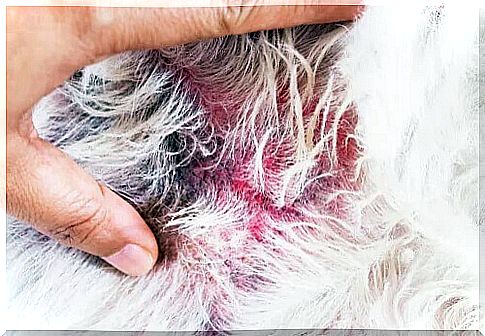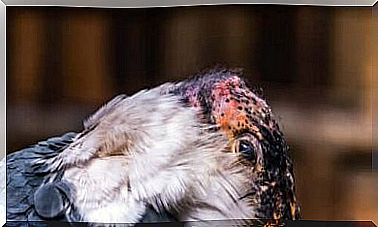Psoriasis In Dogs: What To Do?

Psoriasis in dogs works the same way it works in humans. The skin is the animal body’s first line of defense and contains a multitude of epidermal elements to protect itself, as well as immune components.
The reaction of these elements allows the skin to maintain its homeostasis or balance. However, sometimes this response, as in allergies, occurs excessively and in response to substances that, in principle, should not be problematic.
What is psoriasis?
Psoriasis in dogs has not been as well studied as in humans, in which case it is a well-known autoimmune skin disease. This pathology is related to the individual’s genetics and, although it can become chronic, it can also be reversed with proper treatment.
This disease is characterized by an excessive growth and proliferation of keratinocytes. These cells are the most abundant in the epidermis and contain a very hard protein called keratin, which serves as protection.
It is believed that this excessive development of these cells is due to the activation of the cellular immune system. T cells – a type of white blood cell – and other types of cells release substances that cause an inflammatory effect called psoriatic inflammation, in addition to the overgrowth of keratinocytes.
Symptoms of Psoriasis in Dogs
As we said, psoriasis is an immune-mediated disease that can be developed by dogs that carry it in their genome. The dog’s immune system can over-respond to certain allergens, causing specific symptoms. Unlike other allergies, the symptoms of psoriasis are very specific:
- Very red and inflamed areas appear on the skin.
- The affected areas suffer from overgrowth of keratinocytes, which results in the appearance of thick and abundant scales.
- Dryness in the affected regions, which can cause the appearance of very painful cracks.
- Itching. Lack of hydration leads to excessive itching.
- As a consequence of the four above symptoms, self-induced alopecia can occur in the dog. Also, damaged areas can become infected.
- In general, the animal’s coat is dry and dull.

Occasionally, psoriasis can affect other organs, also covered by this type of epidermal cells, such as the eyes, digestive tract or respiratory system.
Treatment of psoriasis in dogs
Like many other autoimmune diseases, psoriasis in dogs is incurable. However, there are treatments that can greatly improve symptoms.
If the disease is not very advanced and widespread, the use of topical treatments such as creams can help to revitalize the skin. If, on the contrary, psoriasis affects several large areas of the body, it is better to opt for phototherapy or oral or injectable medications.
Phototherapy consists of exposing the animal to natural sunlight or artificial ultraviolet lamps. According to studies, this type of treatment, alone or combined with medication, improves the condition of the skin if there is no sun allergy.

Injectable and oral treatments often cause side effects. These effects are usually reversed when treatment is stopped, but it is very important to take them into account. Therefore, some medications are usually reserved for dogs with an advanced psoriatic state.
On the other hand, in addition to the above, we have other options to improve our pet’s health. This should always be recommended and supervised by a veterinarian:
- Use of specialized shampoos.
- Increased omega 3 in the diet.
- Offer a diet based on fresh foods with little risk of allergy or a commercial hypoallergenic diet.









